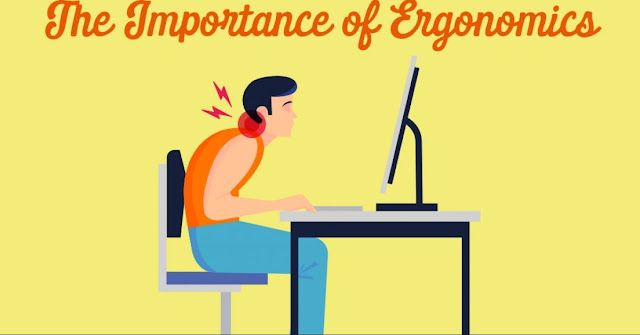The Science Behind Ergonomics: Why It Matters More Than You Think
When most people hear the word ergonomics, they often think of fancy office chairs or specially designed keyboards. But ergonomics is much more than that—it's a science that blends engineering, biology, psychology, and design, all with one main goal: to create environments that promote human well-being and performance. Whether you work at a desk, on a construction site, or in a factory, ergonomics plays a critical role in your health, comfort, and productivity.
What Is Ergonomics, Really?
In simple terms, ergonomics is the study of how people interact with their environment. It aims to design workspaces, tools, and tasks to fit the user, rather than forcing the user to adapt to poorly designed systems. The science looks at human abilities, limitations, and behaviors and uses that information to optimize systems for safety and efficiency.
According to the International Ergonomics Association (IEA), ergonomics covers three primary domains:
-
Physical Ergonomics: Focuses on body posture, repetitive movements, and workplace layout.
-
Cognitive Ergonomics: Deals with mental processes like perception, memory, reasoning, and motor response as they affect interactions among humans and other elements of a system.
-
Organizational Ergonomics: Involves optimizing organizational structures, policies, and processes.
In short, it's not just about your chair—it's about designing work life around how humans actually function best.
Why Is Ergonomics So Important?
At first glance, it might seem like ergonomics is just about comfort. And while comfort is a huge benefit, the science behind ergonomics shows that it impacts far more:
Prevention of Injuries
Poor ergonomic design can lead to serious musculoskeletal disorders (MSDs) like carpal tunnel syndrome, tendonitis, and chronic back pain. These injuries are often the result of repetitive strain, awkward postures, or poor workstation setups. According to the Occupational Safety and Health Administration (OSHA), MSDs account for a significant portion of work-related injuries and lost workdays every year.
A well-designed ergonomic environment reduces strain on the body, minimizes the risk of injury, and supports long-term physical health.
Boost in Productivity
When employees are comfortable and not distracted by pain or discomfort, they work more efficiently. Studies show that ergonomic interventions can increase productivity by as much as 25%. Whether it's an assembly line worker or a software developer, a better-designed workspace enables people to focus on their tasks instead of fighting fatigue, awkward movements, or discomfort.
Improvement in Work Quality
Pain, fatigue, and discomfort don't just slow people down—they also lead to more errors. By minimizing physical stress and cognitive overload, ergonomic improvements help workers maintain higher quality output over longer periods.
Enhanced Employee Morale and Retention
Workers who feel their health and comfort are valued are more likely to stay with an organization. Investing in ergonomic improvements signals to employees that the company cares about their well-being. Happier, healthier workers are typically more loyal and motivated.
Reduction in Costs
While ergonomic improvements often require an upfront investment, they save organizations money in the long run. Fewer injuries mean lower medical costs, less absenteeism, and reduced workers' compensation claims. It's a smart financial move as well as a health-centered one.
How Does Science Shape Ergonomic Design?
Good ergonomic design doesn't happen by accident—it's built on a deep understanding of human anatomy, biomechanics, and psychology.
-
Anthropometry: This science studies human body measurements. Understanding body size variations helps design workspaces and equipment that fit different people comfortably.
-
Biomechanics: This field looks at how muscles, bones, and joints work together. Ergonomists use biomechanics to understand how physical forces affect the body during various tasks.
-
Cognitive Science: Cognitive ergonomics explores how mental workload, decision-making, and attention are influenced by design. For example, a confusing machine interface can cause accidents if it overloads the user's mental capacity.
By combining these scientific principles, ergonomic solutions are not based on guesses—they're based on measurable, predictable human needs and capabilities.
Everyday Examples of Ergonomics at Work
You don't have to look far to see ergonomics in action:
-
Adjustable Office Chairs and Desks: Designed to support the natural curve of the spine and allow different sitting or standing postures.
-
Keyboards and Mice: Shaped to reduce wrist strain and minimize the risk of repetitive stress injuries.
-
Assembly Line Tools: Positioned to minimize reaching and awkward twisting motions.
-
Vehicle Controls: Positioned within easy reach to enhance driver comfort and safety.
Even the height of shelves in a supermarket is influenced by ergonomics—to make products easily reachable without straining.
How You Can Apply Ergonomics in Your Own Life
Even small changes can have a big impact on your health and comfort:
-
Adjust your chair so your feet rest flat on the floor and your knees are at a 90-degree angle.
-
Position your monitor at eye level to avoid neck strain.
-
Keep frequently used items within easy reach to avoid overreaching.
-
Take regular breaks to stretch and move around, especially if you sit for long periods.
Remember: ergonomics isn't a one-size-fits-all solution. It's about making your environment work for you, not against you.
Ergonomics is an Investment in Your Future
Ergonomics isn't just a workplace buzzword or a marketing gimmick—it’s a science with real, measurable benefits. From reducing injuries and boosting productivity to improving morale and saving money, the impact of ergonomic design is powerful and far-reaching. Whether you’re setting up your personal workspace or evaluating your company's safety practices, paying attention to ergonomics is one of the smartest moves you can make.
Your body—and your future self—will thank you.










This comment has been removed by the author.
ReplyDeleteVery nice Rticle
ReplyDelete